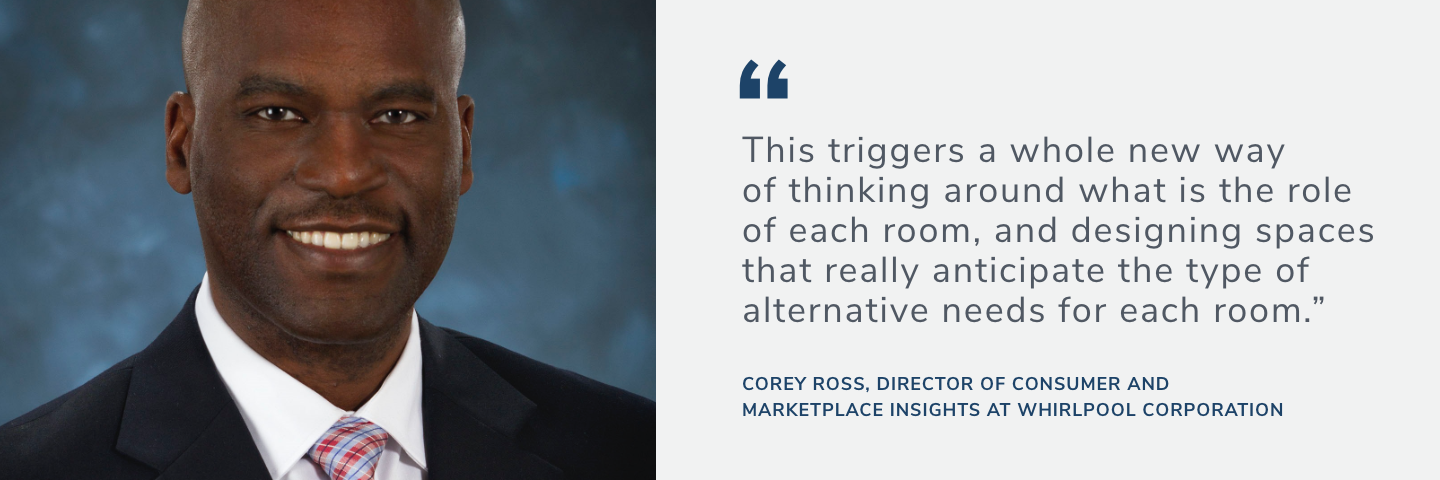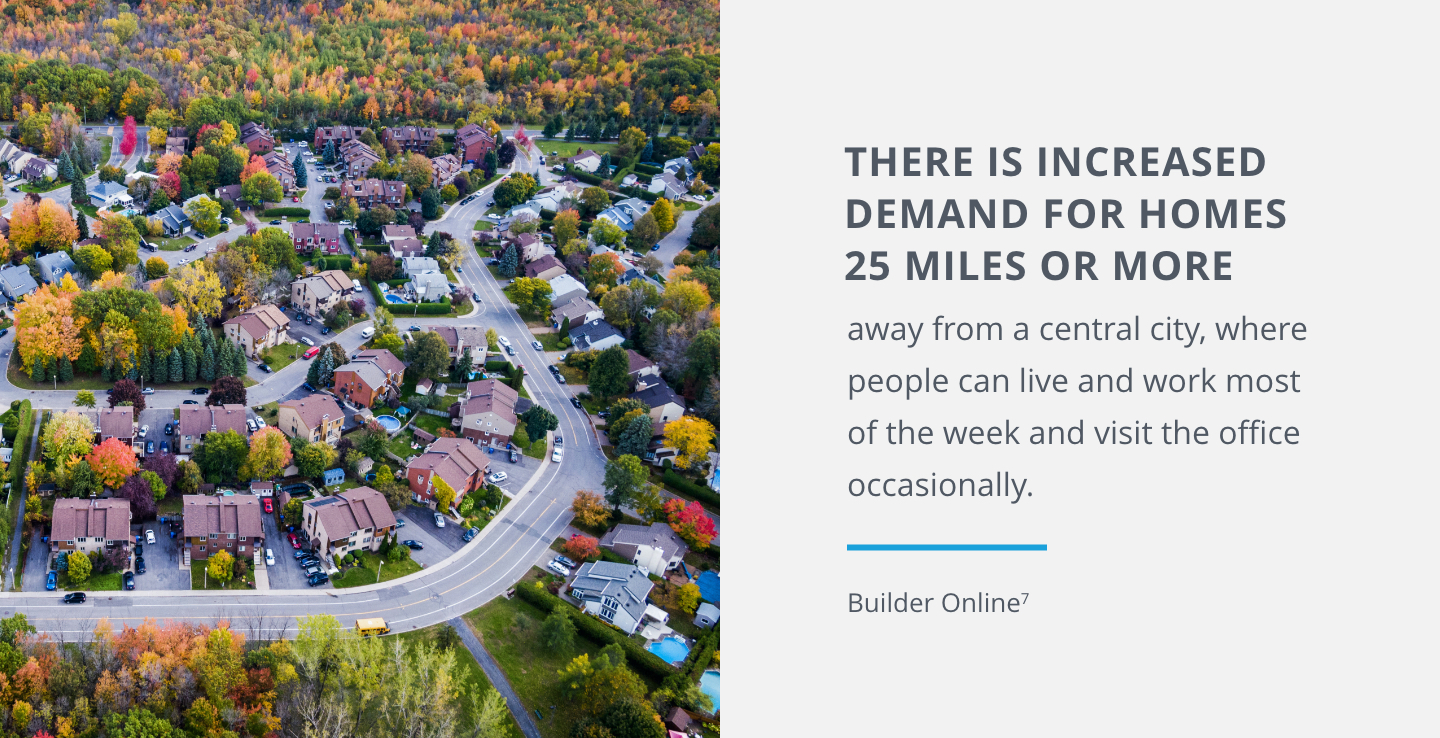REASOn #5
Remote Work
The recent surge in remote work because of the coronavirus pandemic was a nice break for some Gen Xers and baby boomers who have commuted to an office their entire careers.
The recent surge in remote work because of the coronavirus pandemic was a nice break for some Gen Xers and baby boomers who have commuted to an office their entire careers.
For many millennial and Gen Z workers, remote work isn't just a temporary perk - it's becoming more of an expectation. As a result, working from home can define their professional and personal lives at a younger age, allowing them to live wherever they want and still climb the corporate ladder.
Many studies have indicated that work from home (WFH) policies will become permanent after the pandemic. Major companies - from tech leaders to well-known manufacturers - see this shift as a way to help them keep current employees and successfully recruit new ones.
This change to increased WFH is much more likely to benefit people with college degrees1, which also ties closely with millennials2 and Gen Z3 - the most-educated generations in history. This unprecedented opportunity to work from home full-time, or at least most of the time, has transformed what many millennials and Gen Z buyers want from a home and where they might want to live.
For example, according to a National Association of Realtors study4 in 2020:
- More than two-thirds of millennials would like a larger home that has more rooms, including one that could contain an office or private place to work.
- Parents with kids at home have a stronger desire to live in a detached home in a community that would be a longer commute to work, rather than living in an attached dwelling that is more walkable with a shorter commute.
Another study backs that up: 36% of millennials would like a larger home because of the stay-at-home time spent during the pandemic, and a home office is essential or desirable to 74% of them, according to the What Home Buyers Really Want 20215 survey by the National Association of Home Builders.


Given some of the financial limitations younger generations face - such as student loan debt - they might not be able to purchase a home that has everything they need for an ideal work-from-home space. That's why flexibility is important.

"Home builders will need to figure out ways to maximize that space, to serve multiple needs," said Corey Ross, Director of Consumer and Marketplace Insights at Whirlpool Corporation. "If people are working from home, they don't want to be working from a bedroom or kitchen. This triggers a whole new way of thinking around what is the role of each room, and designing spaces that really anticipate the type of alternative needs for each room."
Also, the opportunity to work from just about anywhere in the country has made it easier for employees to live in the far reaches of a metro area or even a different city from where their company is based.
For example, there is increased demand for homes6 25 miles or more away from a central city, where people can live and work most of the week and visit the office occasionally.

And, Gen Z buyers are focused on smaller, less expensive metro areas7 such as Salt Lake City, Oklahoma City and Indianapolis, and less on San Francisco and New York City. Some states and regions, from Maine to Alaska, have been offering incentives8 in recent years for remote workers to live in their community, and the efforts intensified during the pandemic.
"People can work from anywhere and the competition for those people is fierce," said Rob Cleveland, president of Cornerstone Alliance, which is leading the "Move to Michigan9 campaign to get people to live full-time in southwestern Michigan and work remotely. "This program gives us a competitive advantage when trying to get their attention."
Don't miss any of our insights on today's millennial and Gen Z home buyers.
Explore more articles: ![]()
Researching consumer trends and insights allows Whirlpool Corporation to get to know its customers, and in turn, help the building industry provide homes that contain features and designs that help improve life at home. With this shift in working from home, it's important that builders stay up-to-date on how that shift affects what consumers need in a home. Since the pandemic, the kitchen has evolved from a space to prepare food to a place where families gather and entertain more often, where kids do their homework and where employees conduct video meetings. Because of this, consumers are asking for more from their kitchens.
Whirlpool Corporation not only provides a differentiated brand portfolio that delivers the versatility required to meet consumers' changing needs, the brand provides news and information around the latest industry trends. For example:
- Spending more time at home helped homeowners realize they want more storage space in the kitchen - creating the need for larger kitchen islands, appliances with flexible organization options, and wall-to-wall cabinetry.
- Post-work from home happy hours have created a desire for at-home bartending, making undercounter refrigerators an attractive feature to buyers.
- To allow for remote work, kitchens should include several areas for charging electronics, and be equipped with appliance-monitoring technology to keep tabs on dinner.
Whirlpool Corporation is constantly evolving its products around what consumers will want and need next.
SOURCES
1 https://bfi.uchicago.edu/working-paper/why-working-from-home-will-stick/
5 https://cdn.nar.realtor/sites/default/files/documents/2020-transportation-survey-analysis-slides.pdf
8 https://www.lendingtree.com/home/mortgage/the-most-popular-us-cities-for-gen-z-homebuyers-ranked/
9 https://www.bankrate.com/mortgages/places-paying-bounties-to-lure-residents/
